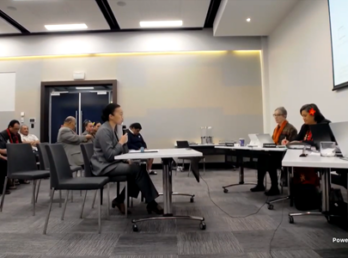A New Lease of Life for Tenants – Clause 27.5 of the ADLS Lease articles
Date
21 Apr 2021
Related Expertise
Ever since the COVID-19 lockdowns commenced, landlords and property lawyers across the country have eagerly awaited a High Court decision on the operation of clause 27.5 of the ADLS Deed of Lease, the no access clause. That day has now arrived. But the decision does not provide the guidance we crave. This article considers that decision and the rights of a commercial tenant to seek a rent reduction during COVID-19 Alert Levels and periods of no access.
Clause 27.5 of the ADLS Deed of Lease was inserted into the standard form deed after the Canterbury Earthquakes to allow a reduction of rent for tenants who could not access their premises because the premises was “red zoned” rather than destroyed or damaged. Clause 27.5 says:
No Access in Emergency
27.5 If there is an emergency and the Tenant is unable to gain access to the premises to fully conduct the Tenant’s business from the premises because of reasons of safety of the public or property or the need to prevent reduce or overcome any hazard, harm or loss that may be associated with the emergency including:
(a) a prohibited or restricted access cordon applying to the premises; or
(b) prohibition on the use of the premises pending the completion of structural engineering or other reports and appropriate certifications required by any competent authority that the premises are fit for use; or
(c) restriction on occupation of the premises by any competent authority,
then a fair proportion of the rent or outgoings shall cease to be payable for the period commencing on the date when the Tenant became unable to gain access to the premises to fully conduct the Tenant’s business from the premises until the inability ceases.
In Coffee Culture Franchise Limited v Home Straight Park Trustees Limited [2021] NZHC 577 the landlord served the tenant with a statutory demand for unpaid rent and outgoings from 14 May 2020 to 7 December 2020. The rent claimed excluded rent for the periods of COVID-19 Alert Level 3 and 4 on the basis that the landlord accepted there were restrictions to access that trigger clause 27.5. The landlord argued that clause 27.5 did not apply during Alert Levels 1 and 2 because at that time the tenant regained full access to its premises.
The tenant applied to the High Court to set aside the statutory demand. The tenant disputed liability relying on clause 27.5 saying that it also applied during Alert Levels 1 and 2 and that a fair proportion of the rent and outgoings should cease to be payable for that period too. The tenant (a café) argued that “no access” included no access to its customers. The anchor tenant in the building was Inland Revenue (‘IRD’). IRD’s 350-500 staff made up the potential customers of the tenant but as of a result COVID-19, the IRD had mandated little to no staff in the building from 26 March 2020 onwards. The tenant raised an argument that the absence of the IRD staff amounted to additional restrictions on access – its customers were restricted access (even though the tenant and its employees had full physical access).
Bell AJ considered it was arguable for the tenant that when IRD told its staff they do not have to come to work and the numbers coming to work were to be reduced, that was a measure within clause 27.5 to reduce or prevent any hazard (in this case, spreading the coronavirus). Bell AJ held that IRD’s directions to staff restricted access to the tenant’s customers and that there was an arguable case that clause 27.5 had been triggered. On this basis, Bell AJ set aside the statutory demand. However, as it was not the Court’s function to deal with the substantive issue (only to decide whether or not the asserted defence was arguable), Bell AJ noted he was not required to make any decision on what would amount to a fair proportion of rent under clause 27.5 – that substantive issue, his Honour noted, should be left to a different judge.
This case, although rather specific on its facts, might excite tenants who operate a café on the ground floor of a commercial building. Such tenants, at least if the issue were to come before Bell AJ, will have an arguable case that their rent too should be reduced, even at Alert Levels 1 and 2, if some of the building’s other tenants had made a commercial decision to mandate that their staff work from home.
Many cafés across the country will have undoubtedly experienced decreases in revenue as a result of more businesses deciding to work from home. On a strict interpretation of clause 27.5, it seems a stretch to say that an absence of customers amounts to the tenant being unable to access the premises, when in reality the tenant has full physical access. Would the result have been the same if the café operated not only a brick and mortar business, but also had an online food delivery business serving customers across the digital marketplace? In theory there is no restriction on “access” to that internet customer base at Alert Levels 1, 2 and even 3. Or would the absence of physical customers alone be sufficient to trigger relief? Will clause 27.5 apply absent an existing pandemic situation if an anchor tenant simply reduced its on-site staff as part of a risk management strategy? Until there is a definitive answer on these questions Coffee Culture Franchise Limited suggests that a restriction on access to customers will trigger clause 27.5.
The result of Coffee Culture Franchise Limited still leaves the interpretation of clause 27.5 unclear. Many commercial tenants will be eligible for fair proportions of rent reduced for no access periods in Alert Levels 3 and 4. Some tenants may also be entitled to fair proportions of rent reduced for no access periods in Alert Levels 1 and 2. Landlords (and tenants) will be hoping for some further authority on this point when a Court is required to make a definitive ruling on clause 27.5 outside of the statutory demand jurisdiction.
Coffee Culture Franchise Limited is also a useful reminder to litigators to carefully consider whether the statutory demand procedure is the best procedure to use (as opposed to an ordinary proceeding or application for summary judgment) when a client is seeking to recover a debt. Bell AJ set aside the statutory demand on the basis that there was a “substantial dispute” about the interpretation of clause 27.5 and that it was not possible for him to specify what a “fair proportion” of the rent was under clause 27.5. The dispute was essentially a legal question on the application of clause 27.5. If the same matter was before a judge on a summary judgment application, that judge should be able to award summary judgment on the portion of rent that remains payable after taking into account what a “fair proportion” is under clause 27.5.
What is clear in any case, and a key point to note for landlords and tenants alike, clause 27.5 should not be seen as an excuse to avoid paying rent for the entire year or indefinitely.
The above overview has been provided for general information purposes only. It is not, nor is it intended to be treated as, legal advice and is subject to change without notice.
Subscribe
Get insights sent direct to your email.










